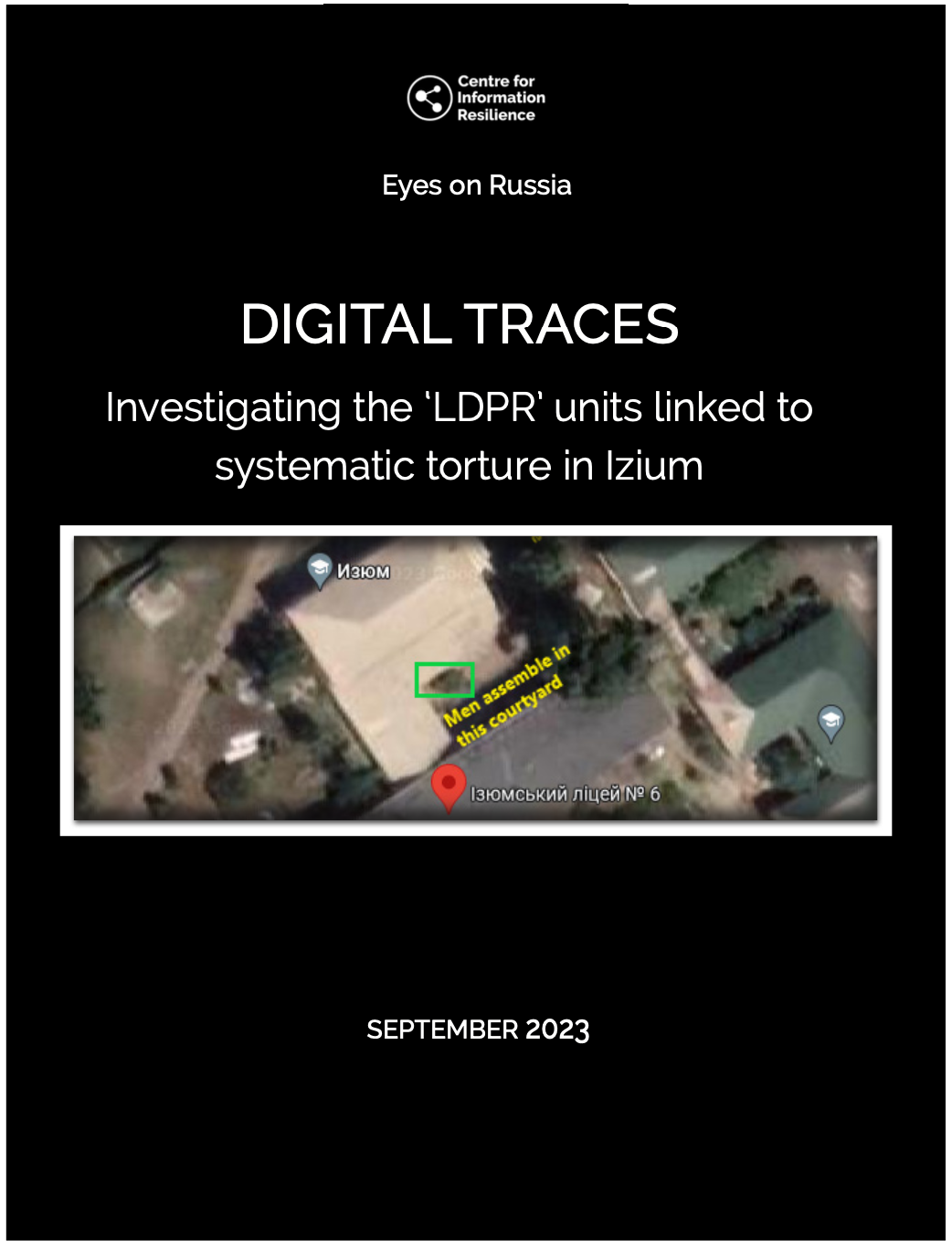A year after the discovery of mass graves and evidence of torture in Izium, open source investigators from the Centre for Information Resilience (CIR) released a report today identifying specific units from the Luhansk and Donetsk People’s Republic militias based at or near locations revealed to be torture sites by independent human rights investigators and journalists.
Read the full report here or at the link below.
Several mass graves were found in woods near Izium on 15th September 2022 after the area was re-captured by Ukrainian forces. Ukrainian investigators stated they found more than 400 bodies at one site. They were mostly civilians, and most showed signs of violent death.
In October last year Human Rights Watch identified school no. 6 as a torture site based on testimonies of survivors of torture. Subsequently, investigators at CIR scoured social media channels for footage of Russian and Russian-backed units stationed in Izium at the time. They eventually came across several different pieces of video, taken by the Russian propagandaist and singer, Roman Razum, which were geolocated to school no.6.
Analysis of the videos posted on social media found that soldiers from the 5th Battalion of the 204thInfantry Regiment of the Luhansk People’s Republic militia were stationed at the school from April to July 2022. Roman Razum used social media at the time to raise funds and deliver food parcels to Luhansk militia fighting in Ukraine, with whom he had a long-running association. CIR geo-located and cross-checked video material, including some showing parcels labelled with the Battalion details, corroborated the presence of the militia unit.
Further open source investigation has identified several soldiers from the 5th Battalion who are from Luhansk and Alchevsk cities, and some are still active in the military.
CIR analysis of other imagery, including some showing detained Ukrainian soldiers, corroborates eye-witness testimony gathered by journalists that school no.2, in the north of the city, was also a torture site.
An investigation by the Associated Press had found that the school was used to detain Ukrainian
soldiers and civilians. Several social media sources analysed by CIR investigators indicate that soldiers from the 20th Army of the Western Military District, a Russian military unit, were stationed there. Analysis of other imagery indicates that soldiers from the BARS-13 unit of the Luhansk People’s
Republic detained and maltreated Ukrainian soldiers at the school.
CIR analysis also found that soldiers from the Oplot ZP company of the 60th Brigade of the Donetsk People’s Republic militia were stationed in Izium. CIR analysis of photos and videos found that soldiers from this unit that called itself ‘the Veterans’ were stationed, in the south of the city, at the municipal boiler plant for the city and in another facility nearby. Both locations are less than a kilometre from the Izium instrument making plant, a site where an investigation by the Ukrainian Pravda journalists gathered survivor testimony.
Ross Burley, Co-Founder of CIR, said:
“Investigators from our Eyes on Russia team have compiled strong evidence about which pro-Russian military units were based at or near torture sites in occupied Izium. These soldiers may not have carried out torture themselves but they occupied the city, they guarded and protected these locations by their presence, and in doing so these soldiers enabled torture to take place.
“Those who survived the Russian occupation describe the Luhansk and Donetsk militias, in particular, as some of the worst behaved of all the occupying forces as they were often drunk, violent and looted homes and shops. There are reports of children being shot dead by drunk militia for breaking curfew and robbing homes while owners are held at gunpoint.
“Our investigators are committed to investigating war crimes and human rights abuses. Collecting and analysing events using open source data and techniques takes time but with this investigation, and others, we hope that one day there will be justice for those who were the victims and survivors of atrocities committed during the Russian occupation.”
The Eyes on Russia Project was established by CIR following the full-scale invasion of Ukraine to document evidence relating to war crimes and human rights abuses.
It is one of several witness projects run by the Centre for Information Resilience that investigates and documents human rights abuses in Afghanistan, Myanmar, Ukraine and Sudan.


